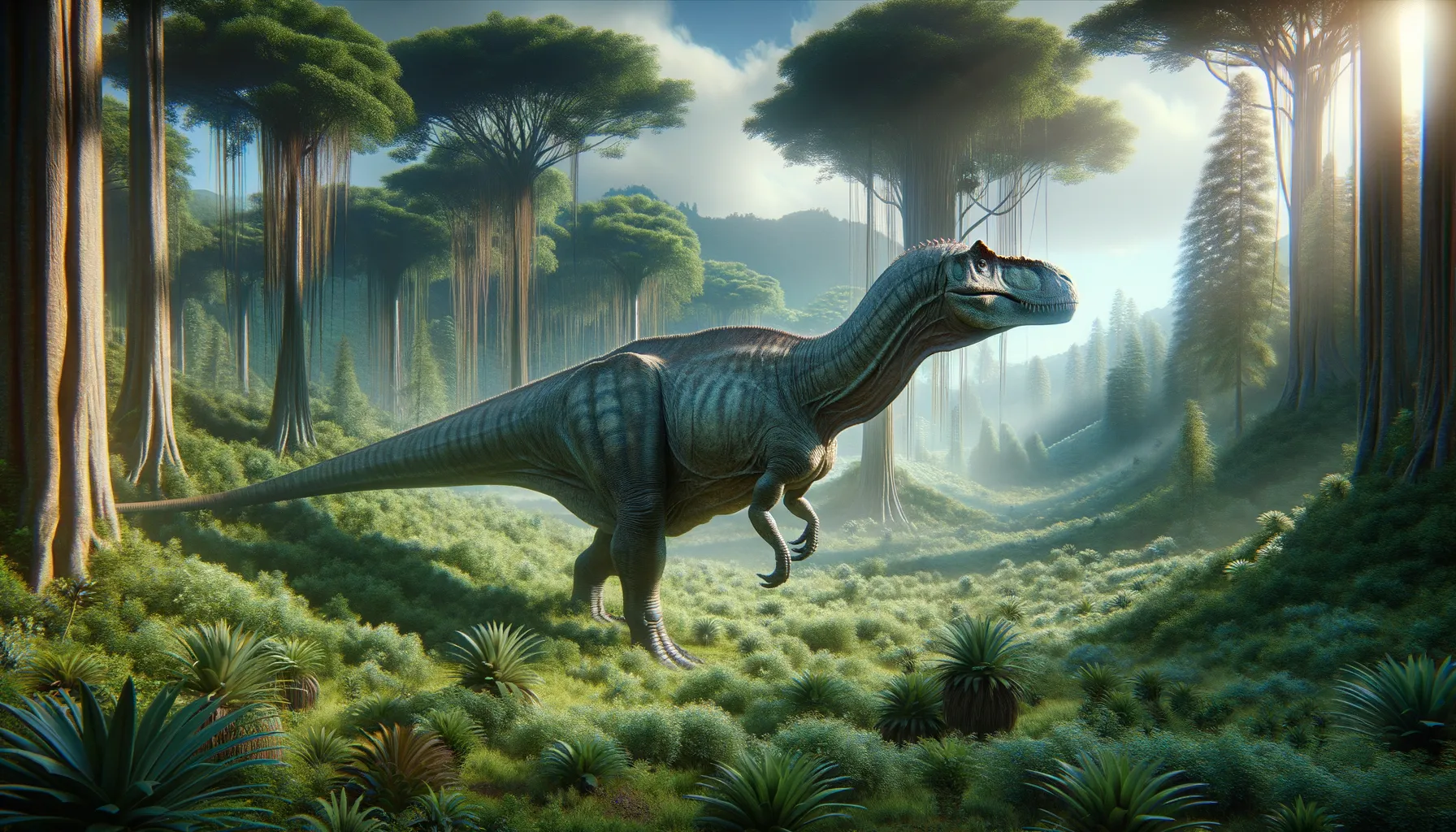
Thotobolosaurus
Strength and size in the Jurassic era!
Period
Jurassic
Length
Roughly 70 feet long from head to tail.
Height
About 20 feet tall at the shoulder.
Weight
Approximately 15 tons.
Thotobolosaurus was a massive herbivorous dinosaur that roamed the Earth during the Jurassic period. Known for its impressive size, it moved slowly but surely through dense forests and open plains in search of vegetation. Its heavy-set body allowed it to fend off predators, while its long neck enabled it to feed on high vegetation. The discovery of its fossils has provided insights into the diversity of dinosaur life during its time.
Diet
Primarily a herbivore, it fed on a variety of plants. Its long neck allowed it to reach both low-growing and high-hanging vegetation, providing a versatile diet. Thotobolosaurus spent most of its day foraging for food to sustain its large body.
Hunting
As a herbivore, it did not hunt other animals. Instead, it foraged continuously, moving in herds to maximize safety and food access. Any defensive behavior was primarily against predators rather than for hunting.
Environmental challenges
Thotobolosaurus faced the challenge of finding sufficient food to sustain its massive size. Seasonal changes affected its food supply, forcing it to migrate periodically. Its size also made it a target for larger carnivorous dinosaurs, requiring constant vigilance. The dense forests and open plains were both an opportunity and a challenge, providing both cover and potential threats.
Speed
Relatively slow, relying on strength over speed.
Lifespan
Estimated to live around 70 to 100 years.
First discovery
Discovered during a 20th-century excavation in Argentina.
Fun Facts
- Thotobolosaurus is known for its unusually large head, which made it stand out among other dinosaurs.
- This dinosaur was primarily a herbivore, dining on the lush vegetation that flourished during its time period.
- Despite its large size, Thotobolosaurus could run faster than many of its plant-eating peers, thanks to its powerful hind legs.
- Paleontologists believe Thotobolosaurus used its tail as a weapon to defend against predators.
- The name Thotobolosaurus roughly translates to 'fearsome bowl lizard', inspired by the unique shape of its skull.
- Fossils of Thotobolosaurus have been mainly found in what is now the central part of Africa.
- Thotobolosaurus had a strong social structure and may have moved in herds for protection and easier access to food.
Growth and Development
It grew rapidly during the first 10 years of its life, gradually reaching its full size. The development of strong bones was crucial to supporting its weight, requiring a diet rich in minerals. Fossilized growth rings suggest a steady but slow growth rate in maturity, allowing for a long natural lifespan.
Habitat
Thotobolosaurus lived in diverse habitats, ranging from dense forests to expansive plains. It thrived in regions with abundant vegetation and seasonal rainfall. Water sources were essential for its survival, so it frequented lakes and rivers. Its habitat choice was influenced by the need for both food and protection.
Interaction with other species
Thotobolosaurus coexisted with various species, both herbivorous and carnivorous. It formed herds for protection, deterring predators with numbers. Its size made it less vulnerable, though young individuals were at risk from predators. It displayed territorial behavior when threatened, standing its ground against rivals.
Natural lifespan
It lived naturally for up to 100 years if it avoided predation.
Reproduction
It laid eggs in shallow nests, often in communal nesting sites. The parental care was minimal, with herd behavior providing the primary means of protecting offspring. Hatchlings were vulnerable, relying on speed and camouflage until they grew larger and more robust.
Social behaviour
Thotobolosaurus lived in herds, which were critical for protection and social interaction. Herds ranged from a few individuals to dozens, depending on the availability of resources. Social bonds were strong, with younger members sticking close to mature adults for guidance. Communication likely involved vocalizations and physical displays to maintain group cohesion.
Fossil locations
Fossils of Thotobolosaurus have been predominantly found in Argentina, indicating its Southern Hemisphere origin. Excavations have revealed well-preserved skeletons, aiding in the understanding of its anatomy and lifestyle. Fossilized footprints across South America hint at its widespread presence during the Jurassic period. Additional discoveries continue to provide insights into its migratory and social behaviors.
